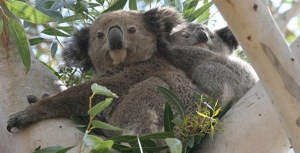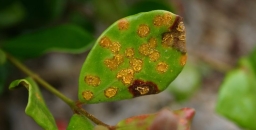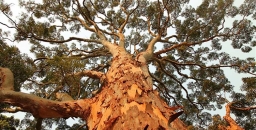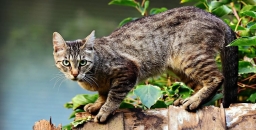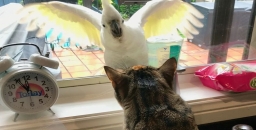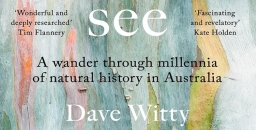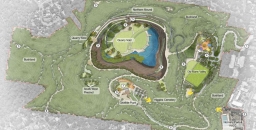Displaying items by tag: habitat loss
As the Election Looms the NSW Government makes some (Small) Environmental Announcements
It is estimated that there are fewer than 21,000 koalas left in NSW. The population may have reduced by more than a quarter over the past 20 years. The species is listed as vulnerable to extinction under the federal EPBC Act in NSW.
The major reason for the decline is habitat loss with the worst areas being in the Pilliga and South Coast. NSW is a heavily cleared landscape. Almost 40% of native forests and bushland has been removed since European settlement, and only 9% of remaining vegetation is in close-to-natural condition.
Eastern Australia is one of the world’s top 11 deforestation hotspots, along with the Amazon, Borneo and the Congo according to a report prepared by the NCC and WWF. Between 1990 and 2016, at least 2 million hectares of forest and bushland in NSW have been destroyed out of the total state area of 81 million hectares.
So what is being done about this? There are a number of decisions over recent years that will make the situation worse:
- As a result of the new biodiversity laws implemented in 2017, 99% of identified koala habitat on private land can be bulldozed.
- Last November the government commenced new logging laws called Integrated Forestry Operations Approvals. The laws reduce protections for forest wildlife, including koalas. One of the worst changes is the introduction of an intensive harvesting zone over 140,000 ha of coastal forest between Taree and Grafton. The intensive harvesting zone will see large-scale clear-felling legalised on the north coast for the first time. Because most of the trees will be gone, it’s likely that most of the koalas will be too!
- In December the Premier Gladys Berejiklian gave the green light to renew the Regional Forest Agreements (RFAs) with the Commonwealth for another 20 years. RFAs are the mechanism by which the states are permitted to log native forests under accreditation from the Commonwealth. They are meant to balance the needs of the logging industry with conservation and public recreation. Conservationists argue that the RFAs have not been properly reassessed with a thorough scientific analysis of the values of native forests, for example for carbon storage and enhancement of catchment water.
NSW Koala Strategy
One positive development, albeit with limitations, is the government announcement last May of a strategy aimed at securing the future of koalas in the wild. $45m has been committed. It involves:
- setting aside 20,000 ha of state forest as koala reserves on the Central Coast, Southern Highlands, North Coast, Hawkesbury and Hunter
- transferring 4,000 ha of native forest on the North Coast to national parks
- allocating $20m to purchase prime koala habitat that can be added to national parks
However the strategy fails to commit to protecting areas known to be home to koalas from a major intensification of logging in state forests under new IFOA laws.
In early February 2019, as the election looms, some parts of the strategy have been implemented. A cattle property once used as a recreational dirt motorbike and horse recreation area has been bought by the NSW government to become part of the first national park to be gazetted in NSW in 11 years. It borders the Wollondilly River in the Southern Highlands and is about 3,680 ha. Actually 1,150 ha of this land is already protected so the addition is only 2,164 ha. There is no information about how much of this area is currently cleared and degraded from its previous use. How long before it becomes genuine koala habitat?
Great Koala National Park is a Better Idea
The National Parks Association has developed a proposal that will provide definite security for koala populations. This is for a 175,000 ha Great Koala National Park on the NSW mid-north coast, new national parks for the last remaining koala populations in southwest and western Sydney, or new national parks in other areas of known koala significance. The choice of the north coast has been confirmed as most effective by studies completed by the Office of Environment and Heritage, copies of which were obtained under Freedom of Information laws.
Funding Announced for Improvements to Popular National Parks
Another government announcement is for a $150m investment to improve access to existing national parks that includes upgraded walking tracks, better visitor facilities and new digital tools such as virtual tours and live-streaming cameras. The main investment is in the Blue Mountains and Royal National Park where visitor numbers have increased rapidly. This is all aimed at the tourist dollar, not conservation that is meant to be the main purpose of national parks.
Will there be an increase in funding for the National Parks and Wildlife Service to look after the additional reserves? After the massive cuts in funding of the service highlighted in previous issues of STEP Matters one wonders!
Removal of Feral Horses from Kosciuszko National Park has been Stopped
In December the NSW Threatened Species Scientific Committee declared feral horses to be a key threatening process because they place dozens of species at risk closer to extinction. In response a spokesman for Environment Minister Gabrielle Upton said the government was preparing a plan of management that would:
identify the heritage value of sustainable wild horse populations and set out how those will be protected while maintaining environmental values.
That goal will be impossible to achieve.
Meanwhile, in response to the passing of the Wild Horse Kosciuszko Act, the number of feral horses being removed by current methods has been reduced to nil since August 2017 even though the Act was not passed until June 2018. The Invasive Species Council has obtained data showing that the peak number of removals was 600 in 2012.
The Nationals Parks and Wildlife Service in 2016 estimated there were 6000 brumbies in Kosciuszko National Park. Scientists estimate the population may grow by up to 20% a year. The drought though is believed to have curtailed brumby numbers.
Labor has committed to repeal the legislation to protect the brumbies.

